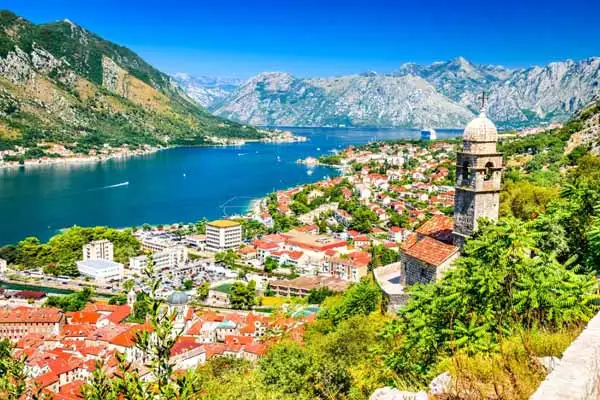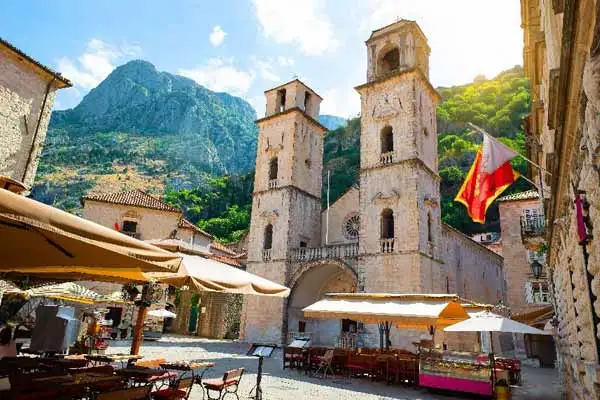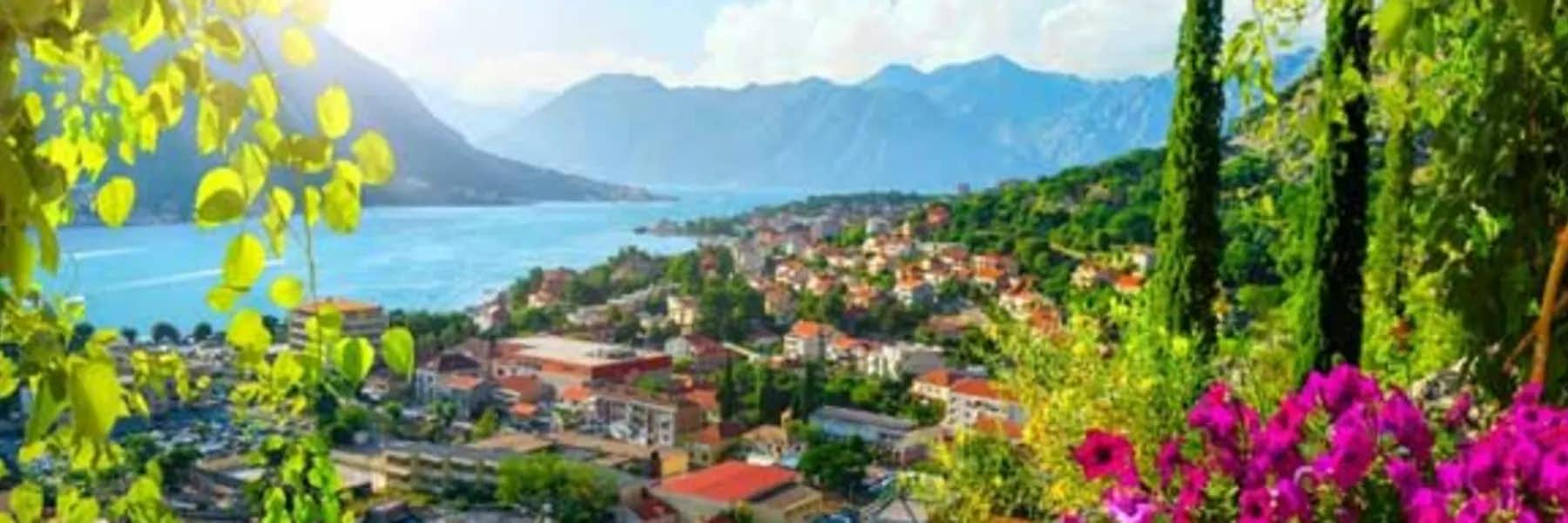Arriving in Kotor, Montenegro, makes you realize what the word ‘scenic’ really means. After exploring the Croatian coast for nearly a month, I thought I’d seen the most breathtaking seaside cities and towns the Balkans have to offer—but Kotor topped them all.
This medieval city is spread along the edge of a deep fjord in the Adriatic, dwarfed by tall, limestone mountains and lapped by the calm waters of a shimmering bay that shares its name. Wherever you happen to be standing in Kotor, the view is always eye-popping.
By bus, it’s a shade under 60 miles from Dubrovnik in Croatia, but this is no place for a rushed day trip—you should spend at least a week here to properly soak up its full splendor.
Kotor’s population of 14,000 swells to bursting point during the summer as tourists flock to its charming Old Town (one of the finest in Europe) and bask in its serene, balmy nights. I enjoyed Kotor in autumn when it was just as beautiful but much more sedate. Past and present mix seamlessly here: the occasional visiting cruise ship doesn’t detract at all from Kotor’s Old World appeal.

When the sun gets too fierce, find yourself a shady spot in one of the many cobblestoned squares, sit back with an espresso and sample some black risotto for a lazy lunch. It’s a delicious dish made with cuttlefish—including the ink—and plenty of garlic and parsley. If you’re feeling more energetic, climb up along the castle walls to check out the incredible views from the lofty parapets of the Fort of Kotor (over 1,300 steps). Explore Venetian palaces and amble through the maze of marble lanes in search of a handicraft shop, ice cream parlor, or fresh fruit stall. You’ll probably pass a lounging cat (or 20) along the way: they’re all part of the scenery here.
In the old town, cars aren’t allowed so the walking is a treat. You’ll find an abundance of museums, galleries, world-heritage churches and opulent palaces. Kotor’s rich seafaring history goes back centuries, so make sure you pay a visit to the Maritime Museum to learn more.

Montenegro is fairly compact so you can easily reach the country’s other must-see areas from Kotor, including Herceg Novi, the popular seaside resort of Budva, and bustling Podgorica, the nation’s capital. You’ll also find handy bus connections to popular destinations outside of Montenegro including Skopje, Belgrade, Dubrovnik, Split, Mostar, and Sarajevo.
But don’t be in a hurry to leave Montenegro—between May and October you’ll find excellent rafting on the Tara River, about four hours from the coast in the jaw-dropping Durmitor National Park. If serious wilderness hiking is on your agenda, head to pristine Biogradska Gora National Park, which contains one of the three remaining virgin forests in Europe. And if you’re a skier, forget the Alps—in Montenegro there are eight impressive ski resorts to choose from.
Try your hand at paragliding in the mountains above Kotor or explore one of the tiny villages that dot the nearby coast. One of the prettiest is Perast, just a short shuttle-bus trip from Kotor and a perfect day trip option.
From here, you can ask one of the local fishermen to take you across by boat to see the ancient church on Our Lady of the Rocks island or the Benedictine monastery on the smaller St. George island.
Montenegro is living history—over the centuries, this attractive nation has been ruled by Byzantines, Slovenians, Venetians, Austrians, Russians, the French, and then Austrians again! It was part of Yugoslavia and then Serbia in the 20th century but has been independent since 2006.
Insider tip: if you’re getting a taxi from Tivat airport into Kotor’s Old Town, don’t pay more than €20. Some drivers may try to charge you more but just wait for a cheaper cab.
Finding quality food in Kotor is easy, with many of the best restaurants hidden in little laneways throughout the old town. Outside the city walls, the bargains are even better—I had a brilliant $7 pizza at one venue and an excellent $3 hamburger at another. For self-catering, check out the local markets just outside the city walls to stock up your Airbnb apartment fridge—all the produce is fresh, authentic, and super-affordable; and the seafood is sublime.
Accommodation costs will vary depending on the time of year, but I chatted with one long-term expat who was paying around $550 a month for a flat with lovely bay views. Prices climb and choices dwindle in the heart of summer (which can be quite hot anyway) so I’d suggest visiting outside of July or August if you’re looking for the best value.
Mountains, castles, beaches, lakes, scrumptious food, cosmopolitan cities, dazzling history, friendly people, and affordable living—what’s not to love about Montenegro and its sparkling seaside jewel, Kotor?
Related Articles
The Best Towns and Cities to Retire in Europe
